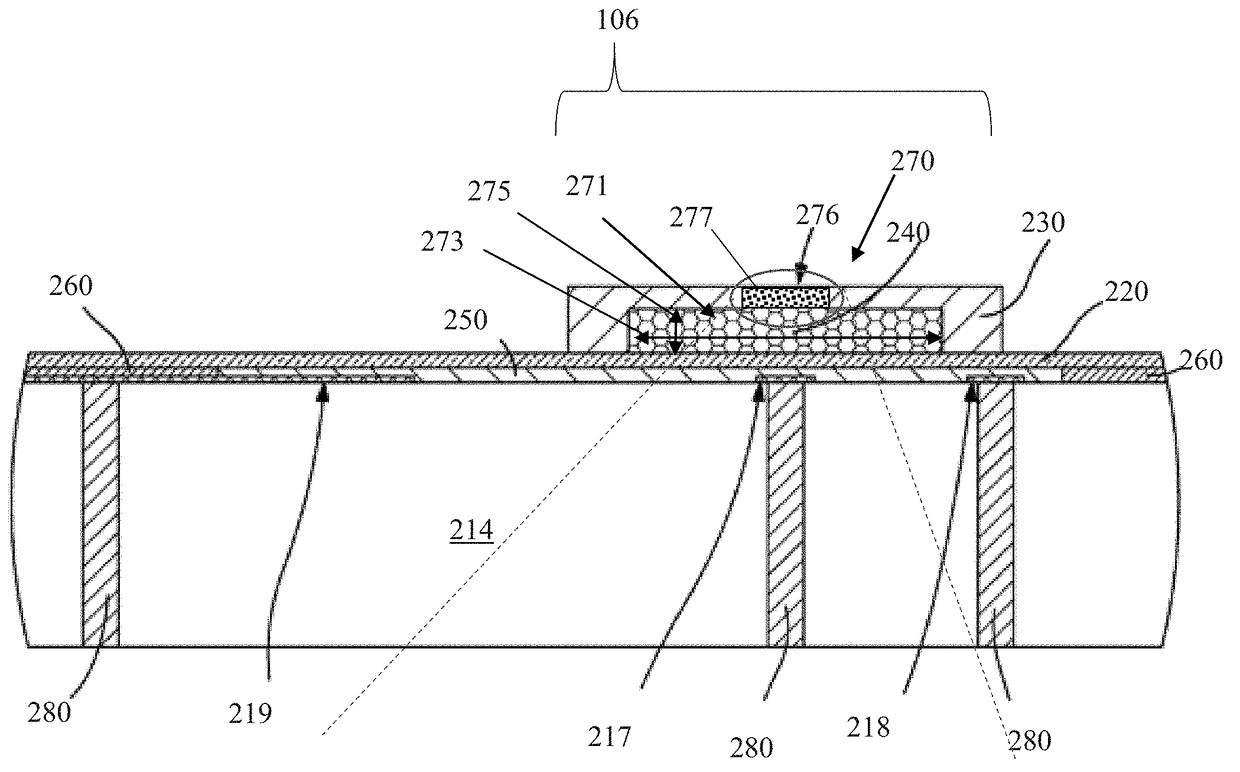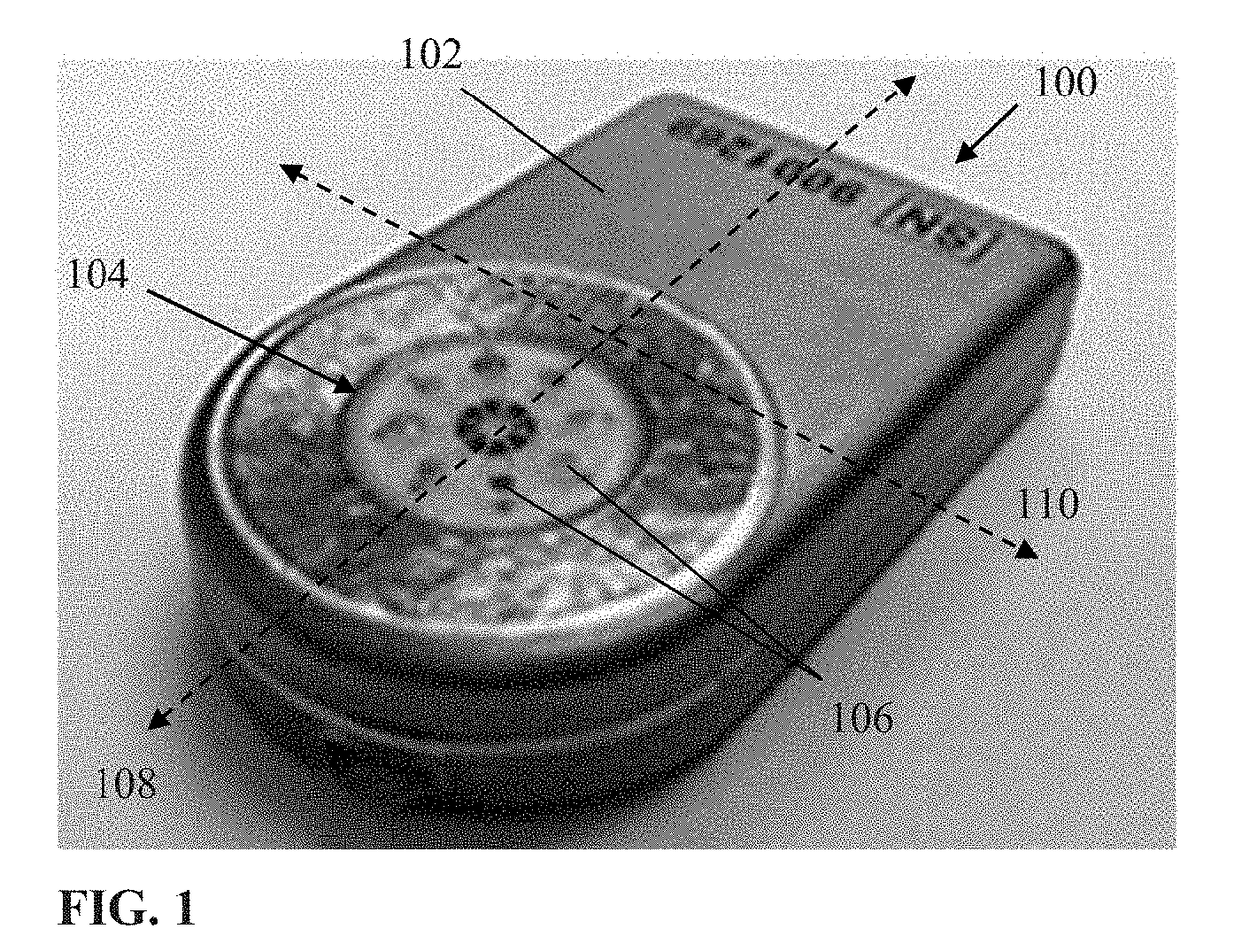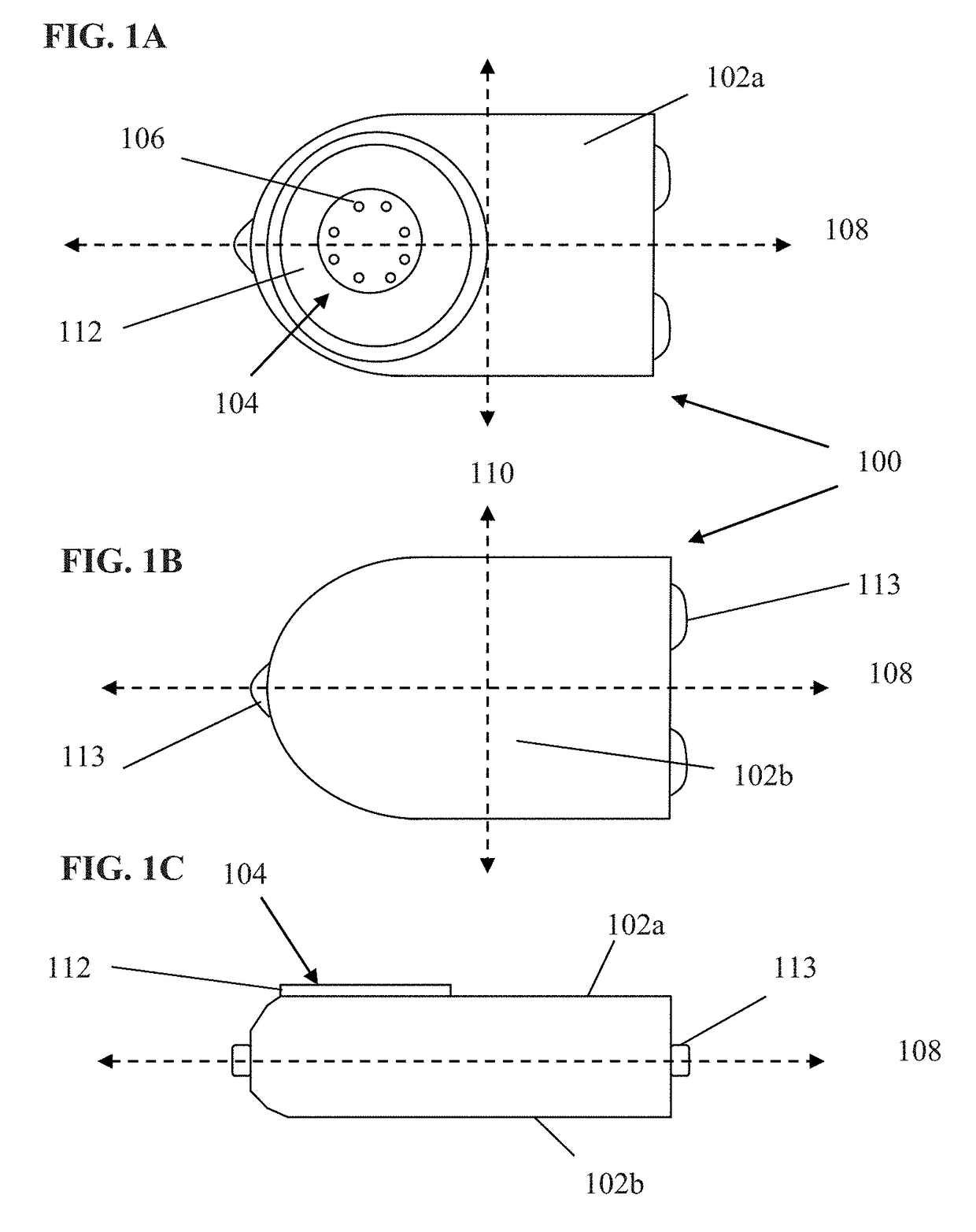Biocompatible implantable sensor apparatus and methods
a sensor and biocompatible technology, applied in the field of biocompatible implantable sensor apparatus and methods, can solve the problems of not being realistically expected, precluding warning strategies that rely, and not being able to meet the needs of patients, and achieve the effects of not and reducing the risk of infection
- Summary
- Abstract
- Description
- Claims
- Application Information
AI Technical Summary
Benefits of technology
Problems solved by technology
Method used
Image
Examples
Embodiment Construction
[0060]Reference is now made to the drawings, wherein like numerals refer to like parts throughout.
Detailed Description of Exemplary Embodiments
[0061]Exemplary embodiments of the present disclosure are now described in detail. While these embodiments are primarily discussed in the context of a fully implantable glucose sensor, such as those exemplary embodiments described herein, and / or those set forth in U.S. Patent Application Publication No. 2013 / 0197332 filed Jul. 26, 2012 entitled “Tissue Implantable Sensor With Hermetically Sealed Housing;” U.S. Pat. No. 7,894,870 to Lucisano et al. issued Feb. 22, 2011 and entitled “Hermetic implantable sensor;” U.S. Patent Application Publication No. 20110137142 to Lucisano et al. published Jun. 9, 2011 and entitled “Hermetic Implantable Sensor;” U.S. Pat. No. 8,763,245 to Lucisano et al. issued Jul. 1, 2014 and entitled “Hermetic feedthrough assembly for ceramic body;” U.S. Patent Application Publication No. 20140309510 to Lucisano et al. pu...
PUM
 Login to View More
Login to View More Abstract
Description
Claims
Application Information
 Login to View More
Login to View More - R&D
- Intellectual Property
- Life Sciences
- Materials
- Tech Scout
- Unparalleled Data Quality
- Higher Quality Content
- 60% Fewer Hallucinations
Browse by: Latest US Patents, China's latest patents, Technical Efficacy Thesaurus, Application Domain, Technology Topic, Popular Technical Reports.
© 2025 PatSnap. All rights reserved.Legal|Privacy policy|Modern Slavery Act Transparency Statement|Sitemap|About US| Contact US: help@patsnap.com



